The major Samantha Murphy questions that still remain unanswered – as search for her body reaches heartbreaking milestone
It’s been 131 days since beloved mother-of-three Samantha Murphy went missing and her family still don’t know the whereabouts of her body.
The 51-year-old left her home in Ballarat East, northwest of Melbourne, on February 4 for her usual morning run but never returned.
Her disappearance made headlines across the country, sparked numerous searches by police and the community and left her husband Mick and their three children devastated.
In early March, Patrick Orren Stephenson, 22, was charged with her alleged murder.
Stephenson is the son of former AFL Richmond and Geelong AFL player Orren Stephenson and is not known to the Murphy family.
The mysterious disappearance of Samantha Murphy (pictured) has touched the hearts of Australians and left many unanswered questions

Criminologist Dr Xanthé Mallett (pictured) believes Ms Murphy’s disappearance has resonated so much because it could have been any of us
Melbourne-based lawyer Paul Galbally of Galbally & O’Bryan, one of Australia’s top criminal lawyers, has reportedly been hired by Stephenson to lead his defense case.
In a significant development, Ms Murphy’s phone and “items of interest” were found on May 29 at a private dam near Slaughterhouse Road, south of Buninyong.
The dam is about 15km from Ballarat East, where Ms Murphy made her last run.
Police then completed a two-day targeted search into Ms Murphy’s disappearance on Wednesday
Dr. Xanthé Mallett, a forensic criminologist at Newcastle University, said the case has resonated with so many Australians for one simple reason.
“My first thought when I saw Samantha had disappeared was that any of us could have been doing very normal things, living our lives and still been the victim of a violent crime,” she said.
“So many women could imagine themselves being her, they could sympathize with her.”
She gave her valuable insights to Daily Mail Australia on the unanswered questions surrounding Ms Murphy’s alleged murder.
Why hasn’t Mrs. Murphy’s body been found?
Dr. Mallett said recovering Ms Murphy’s body was always going to be a challenge due to the landscape of the area where she was last seen.
“It’s very open, there’s no CCTV or any other kind of surveillance that could have helped the police,” she said.
‘There aren’t many people around so it was always going to be a challenge when there are such large areas that could potentially be of forensic interest to police.’
She added that it would be different in an urban area: ‘It’s difficult to disappear in a city as you have a lot of witnesses, you have CCTV on buildings, you have dashcams, you have all this different technological information and also eyewitnesses to help build that image. But in this case none of that was possible.’
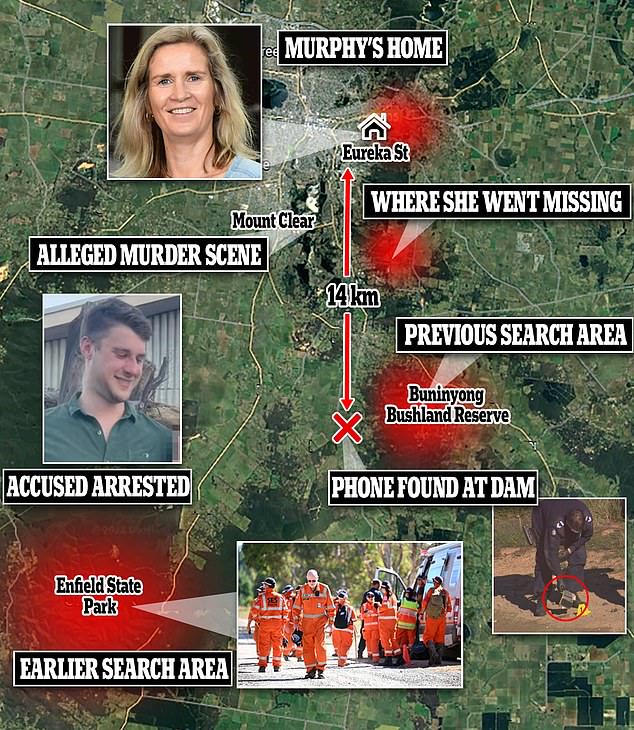
The search for clues in the Samantha Murphy case continues
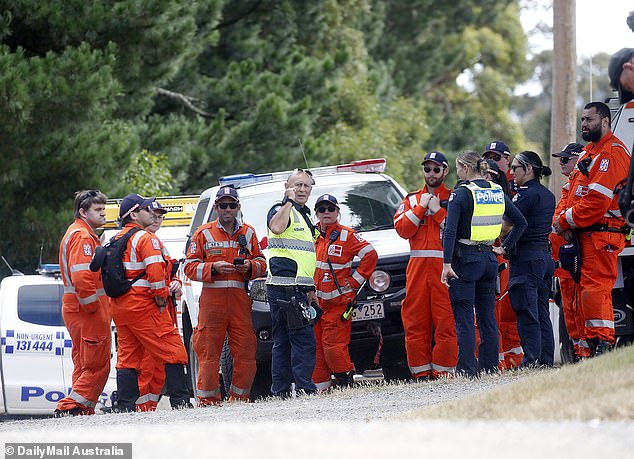
Samantha Murphy has still not been found, despite a massive search involving police, SES and countless volunteers (pictured)
Why don’t some accused people share any information they have?
Dr. Mallett said, as in any case, “people have the right to remain silent and not provide information to police that they believe may incriminate them, or that they really know nothing.”
“A person can be alleged to have committed a crime, but until that is done in court and he is found guilty beyond a reasonable doubt, there is always the possibility that he may not actually be able to release the information the police are looking for . ,’ she said.
Dr. Mallett explained in the Samantha Murphy case, “We are a long way from having legal proceedings.”
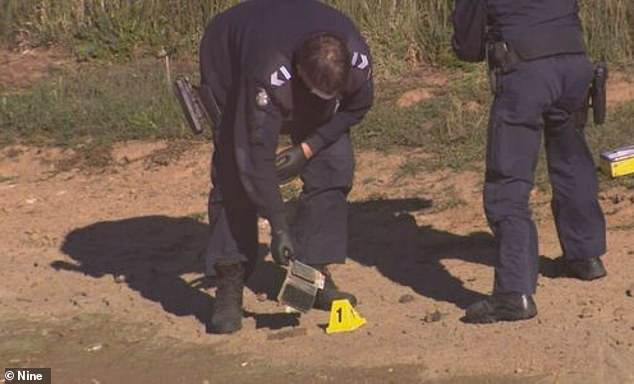
In a significant development, Ms Murphy’s phone and “items of interest” were found on May 29 at a private dam near Slaughterhouse Road, south of Buninyong.
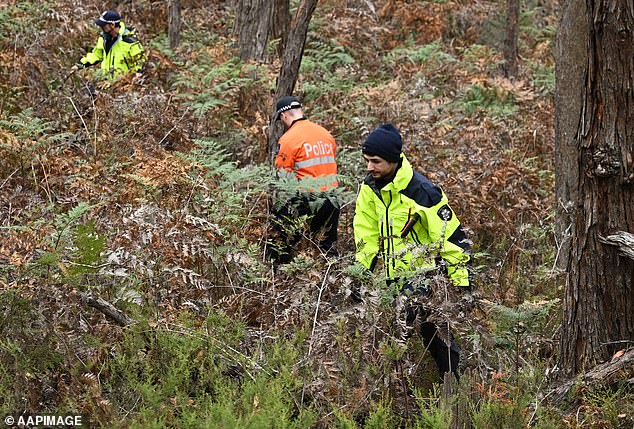
Police have been forced to scour rugged terrain in search of Ms Murphy’s body
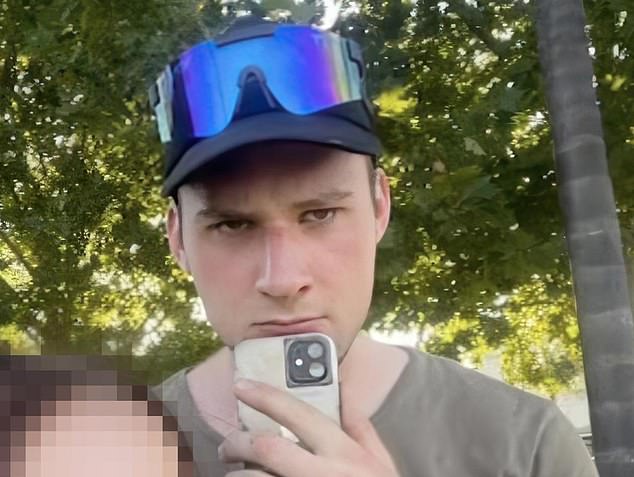
Patrick Orren Stephenson, 22, (above) has been charged with murder over the disappearance of Ballarat mother Samantha Murphy
What would Mrs. Murphy’s family be going through?
Dr. Mallett said she has worked many missing persons cases and others where the victim is presumed dead and the body has not been found.
“I’ve worked with a lot of families over the years, and the worst thing they always say is they don’t know.
“It’s what we would classify as ambiguous loss, and essentially there’s always the hope that because no remains have been found, that person will one day walk through the door.”
Dr. Mallett added that it is “impossible for most people to give up that hope until there is a definitive, if devastating, conclusion and remains are found.”

Her disappearance made headlines across the country, sparked numerous searches by police and the community and left her husband Mick (pictured) and their three children devastated.
She said that in this case, Mrs. Murphy is believed to have died, “but ultimately the family will not give up hope until they know.”
“My heart goes out to them because until they get answers, there is no way they can move on and process what happened.”
In her experience with families of people who have gone missing, been victims of violent crime or have been murdered, Dr. Mallett said they never use the word closure.
“Closure is not something that families ever get.
“Maybe they’ll get answers, maybe they’ll move on. They may start to accept a new reality that that person is not coming home, but they will never talk about closure.
“They know they will never achieve closure, that the pain will continue.”
She said she could only remember one instance where a relative of a missing person said, stop looking, they are dead.
“That seemed very unusual to me,” Dr. Mallett said.
What information can Mrs. Murphy’s phone reveal?
When the news broke, Ms Murphy’s phone was recovered. Dr. Mallett said she initially thought police would not be able to recover any information because it was believed to have been underwater in the mud for four months.
“Then it turned out that the phone was working almost perfectly, which was a total surprise to me, and so I would say that geolocation data would be the first thing the police would look at.”
She said tracking the phone’s movements doesn’t necessarily indicate it was with Ms. Murphy, but it does give police more geolocation points to at least help understand where the phone was.
Dr. Mallett said in similar cases, police are also investigating all contacts who called or texted and websites viewed, to piece together a picture.
“Obviously there may be some limitations… was the phone on at the time? Did it have battery life? These things limit what police can get out of that phone.”
How would the police build their case?
Dr. Mallett said it was a very detailed investigation and police were clearly looking for Ms Murphy’s body.
“Not only for the good of the family, although they desperately need to know where she is, they need to return to them, but that Samantha’s body will also be a primary source of information for them, and so they will need that very much for the research.’
She said cases can continue without a body, so police would monitor all movements of the suspects and the people they may have spoken to.
She also noted that recovering the phone may have led to new witnesses coming forward.
“So they will build that full picture from the moment Samantha disappeared to the arrest, looking at all the details around that to determine who did what, when, who had contact with whom and who shared what information. ‘
Dr. Mallett said police will no doubt make sure everything is done correctly because it was such a high-profile case.
“Everyone is going to keep an eye on this case because I think it will resonate because she was such a normal woman.
‘We have seen so much violence against women lately. And this is yet another situation where a woman cannot safely carry out her normal activities, and that is something that we urgently need to address, not just for safety at home, but also for safety in public.”
The investigation into Ms Murphy’s disappearance continues.
Anyone with information is urged to contact Crime Stoppers on 1800 333 000.
